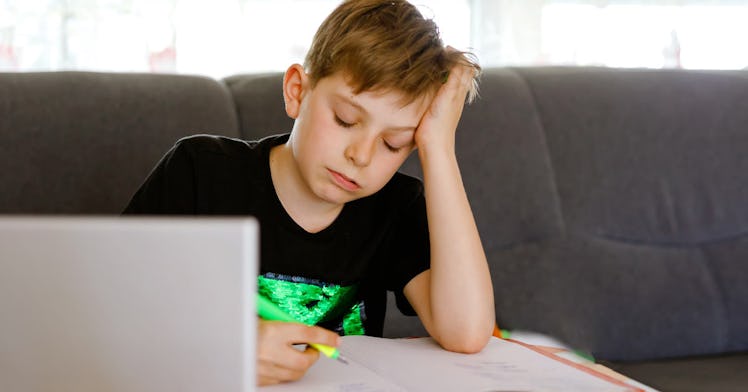Kids Are Getting Flunked At Record Rates — WTF, Schools?
Kids are failing at record rates amid a pandemic that has killed 300,000 Americans. Stop this madness.

According to
The Washington Post, more American K-12 students than ever got F’s in the first semester of the 2020-2021 school year than ever. This is both surprising and not surprising at all. After all, when COVID-19 hit in March, many students already struggled with the rapid shift to remote learning. Many of the baked-in inequities of going remote — from a lack of wifi access to a lack of learning space free of distraction at home to a lack of a computer — were not ameliorated over the summer and, although some schools reopened this year to in-student instruction, many others have not.Remote learning right now is not just remote learning. It is, instead, remote learning in the midst of a pandemic. Many kids are living in households that are experiencing record levels of food insecurity, unemployment, and even death and illness, all while trying to attempt to attend “school” absent the pleasures of school, which is being with friends and experiencing individualized attention from the teacher and the energy of being in class. You would think — or rather, you would hope — that many teachers and school administrators would be cognizant of this fact and apply a more lenient grading policy in an upside-down world. But apparently, according to the WSP, this is not the case.It feels surprising that teachers and administrators who set policy would choose to punish students with punitive grades right now, especially as many schools, and selfless teachers, are struggling to make ends meet themselves. But it’s not surprising that, in the absence of said leniency, more students are failing than ever, due to the magnanimity of circumstances they are all facing at this current moment. According to the article, in which data was aggregated about failure rates across the country, kids are struggling everywhere.In Maryland, six times as many kids failed math and English in Montgomery County schools. In Texas, half of Houston ISD students in middle school and high school are failing at least one class. In North Carolina, nearly half of students from the 3rd to the 12th grade are failing at least one class. Fairfax, Virginia public schools found that the rate of kids failing two classes in middle and high school functionally doubled. All across the country, rates of failure have jumped. There are often two immediate reactions to implementing a pass/fail system or giving kids partial credit to make it harder for them to fail. One is that we aren’t preparing students “for the real world” by refusing to fail them. The other is that kids who work really hard will be disheartened to see that students who struggle and scrape by getting the same passing grade alongside them. Both of these are, quite frankly, bull.The real world has leaked into kids’ lives already. They are struggling to survive it just as their parents, their teachers, and all of us are. They are the most likely to suffer chronic hunger in the United States and many of them are working in parking lots to access free WiFi from restaurant chains, or are doing work alongside their siblings, or are helping out their parents in babysitting and learning and holding it all together. These kids have already been thrown into the real world; schools do not need to punish them for struggling with it. But students who are applying to colleges fear they’ll lose a competitive edge against other students if grades are more lenient. A pass/fail system is not a solution when many college systems have said they won’t accept transcripts that, instead of grades, have pass/fail for the 2020-2021 school year. So what are teachers and administrators to do? One teacher put the entire letter grade system on ice in a quote to The Washington Post.“I think A-F grades are questionable even during non-pandemic times but absolutely pointless right now,” said Justin Parmenter, who teaches middle school English in North Carolina. “When a student’s ability to access instruction depends on what kind of Internet signal they have, it’s a huge equity issue. Add to that the fact that these conditions make it very difficult for us to provide the kind of individualized instruction that our students need (and in some cases, legally require) and so many other reasons. This is just not the time for it.”Perhaps the problem is that children have been unjustly thrust into increasingly inequitable learning situations that already existed — and at disparate rates — and that instead of punitive punishment measures to help kids “get with the program,” it is the schools who should get with the program themselves. Kids are struggling. More punishment will not suddenly lift them out of the weeds to success. There is no amount of bootstrapping that can deal with a pandemic.
This article was originally published on